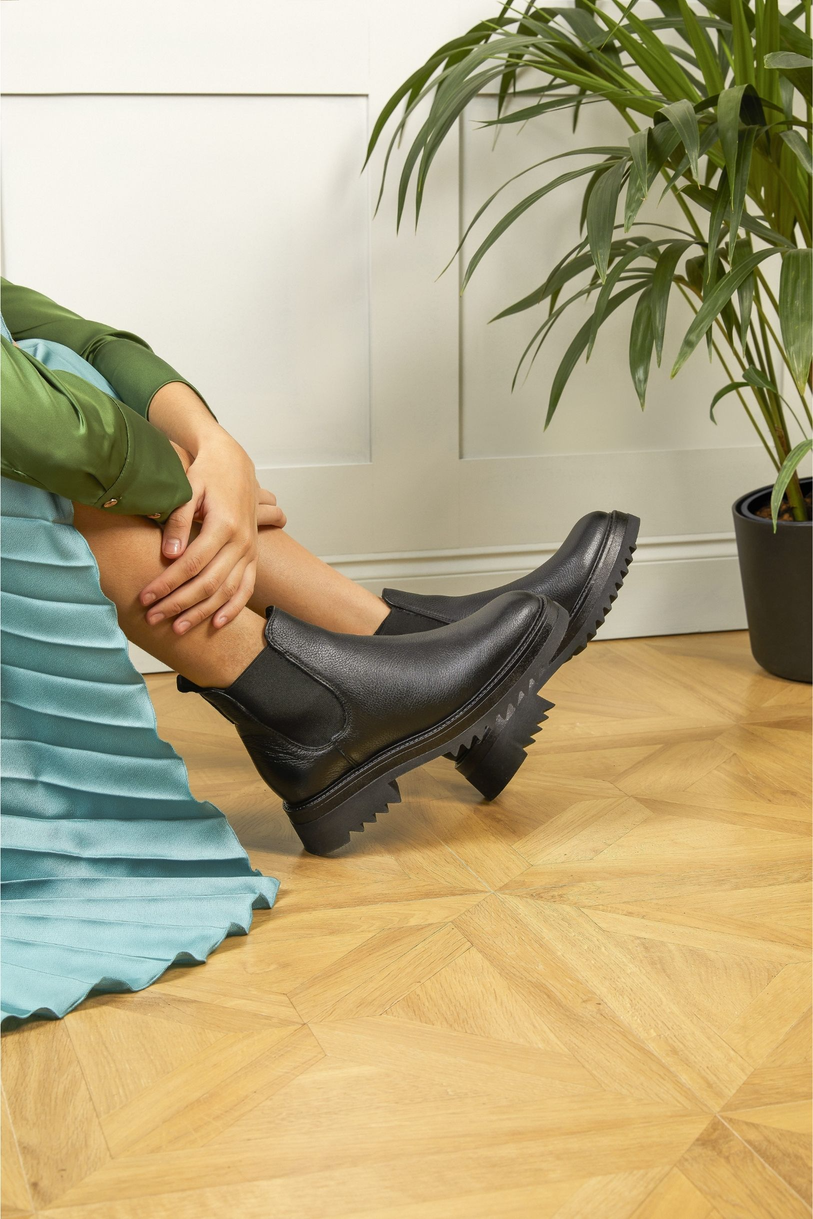
Wearing in Shoes
22 October 2021
Unwrapping a beautiful pair of new shoes is one of life’s true luxuries. Whether shopping for shoes or boots, you may find that your new purchase requires a small period of ‘wearing in’ or ‘breaking in’ time in order to reach their optimum comfort potential. Simple and easy, we have a few tips and tricks about how to make your shoes fit as well as possible, no blisters here!

How to wear in shoes and trainers
The most important thing to look for when purchasing new shoes is ensuring that they are the right size and fit for your foot. Never try to force your feet into that gorgeous pair of shoes which aren’t your size just because they are the last pair in the store. As tempting as it may be, you will find yourself with sore feet and pesky blisters. For a comfortable fit, always select shoes in a size which fits your foot well. You can view our helpful shoe size guide here, for help with converting international shoe sizes.
When it comes to wearing in new shoes for the first time, slow and steady is most definitely the best route to take. Before embarking on a long, busy day in a brand new pair of shoes, we recommend wearing the new shoes for short periods of time to help soften them and ‘wear them in’. Start off by wearing them around the house, as you can easily slip them off if any pain starts to arise. Be careful to avoid blisters at this stage as they can be sore and painful, and will slow down the wearing in process.

How to avoid blisters with new shoes
Some parts of the foot are naturally more susceptible to blisters than others, such as the back of the heel and the side of the toes. This is due to increased friction and pressure in these places through movement and walking, in addition to many shoes having thicker materials in these areas. Blisters can spoil a day out with their soreness, but there are a few ways to stop them from forming. It is good practice to try and keep your feet well moisturised with a hydrating foot cream or petroleum jelly, as well hydrated skin is less likely to rub against the shoes. You can also place precautionary plasters in spots that you might expect to rub, to give extra protection. It can also be a good idea to put a couple of plasters in your handbag or wallet, which can easily be applied should you feel rubbing or discomfort.

Wearing in leather boots
When wearing in a pair of leather boots, treat them the same as you would a pair of shoes, using the above method. Leather is a natural, porous material, so over time it will naturally mould and shape to the form of your foot and leg. When wearing in taller boots, try wearing a longer sock, as rubbing can take place on the leg as well as the foot.
Switch between old and new shoes
When you purchase a beautiful new pair of shoes, it can be tempting to never take them off. However, we don’t recommend it. Once you have ‘worn in’ your new shoes, we suggest alternating them with other pairs in your shoe wardrobe so that they have time to dry out completely between wears, which is vital to avoid the materials warping and losing their shape.
How to shop for perfect fitting shoes
When on the hunt for that perfect pair of leather ankle boots or lace up Derby shoes, it can feel like a never ending search, so we are here to give you some tips on how to find the perfect fit.
1. Buy quality footwear. This one speaks for itself, but if you wear shoes and boots of poor quality materials and construction, they will most likely not offer the correct support for your foot. Look for quality materials and reliable construction methods when shoe shopping for durability, comfort and support. It is important to look after your feet, so purchase quality shoes where you can.
2. Make sure you try on both feet of the shoes. A huge sixty percent of us have a difference in size in our feet, so shoes are most definitely not a ‘one size fits all’ situation. The size which could fit your left foot, could be too tight on your right foot, so it is essential to try the shoes on as a pair to check that the full fit is correct.
3. Try shoes on with the same type of socks which you plan to wear with them. If you plan on wearing your shoes with ankle socks, then try them on with those to ensure the correct fit. If you try them on with thick wooly socks, you may find that they fit too largely when wearing thinner crew socks.
4. Don’t be afraid to replace the shoe laces. Often, shoes are presented with interesting shoe lacing techniques for aesthetic purposes, but this isn’t always the most comfortable or adaptable way to wear them, with some styles of lacing not being able to adjust as easily and as tightly as classic lattice lacing. Don’t be afraid to take the laces out of the shoes and re-lace them in a style which feels more comfortable to you, you can always change the laces completely for a new look, too.
5. Check the fit. The fit is the most important element to consider when selecting new shoes, as it will determine how comfortable you feel whilst wearing them. When wearing the shoes, you should be able to wiggle your toes within them, and ideally keep around a finger space between the end of your longest toe and the end of the shoebox. Take the shoes for a few steps on carpet to check they feel comfortable when walking and moving too.